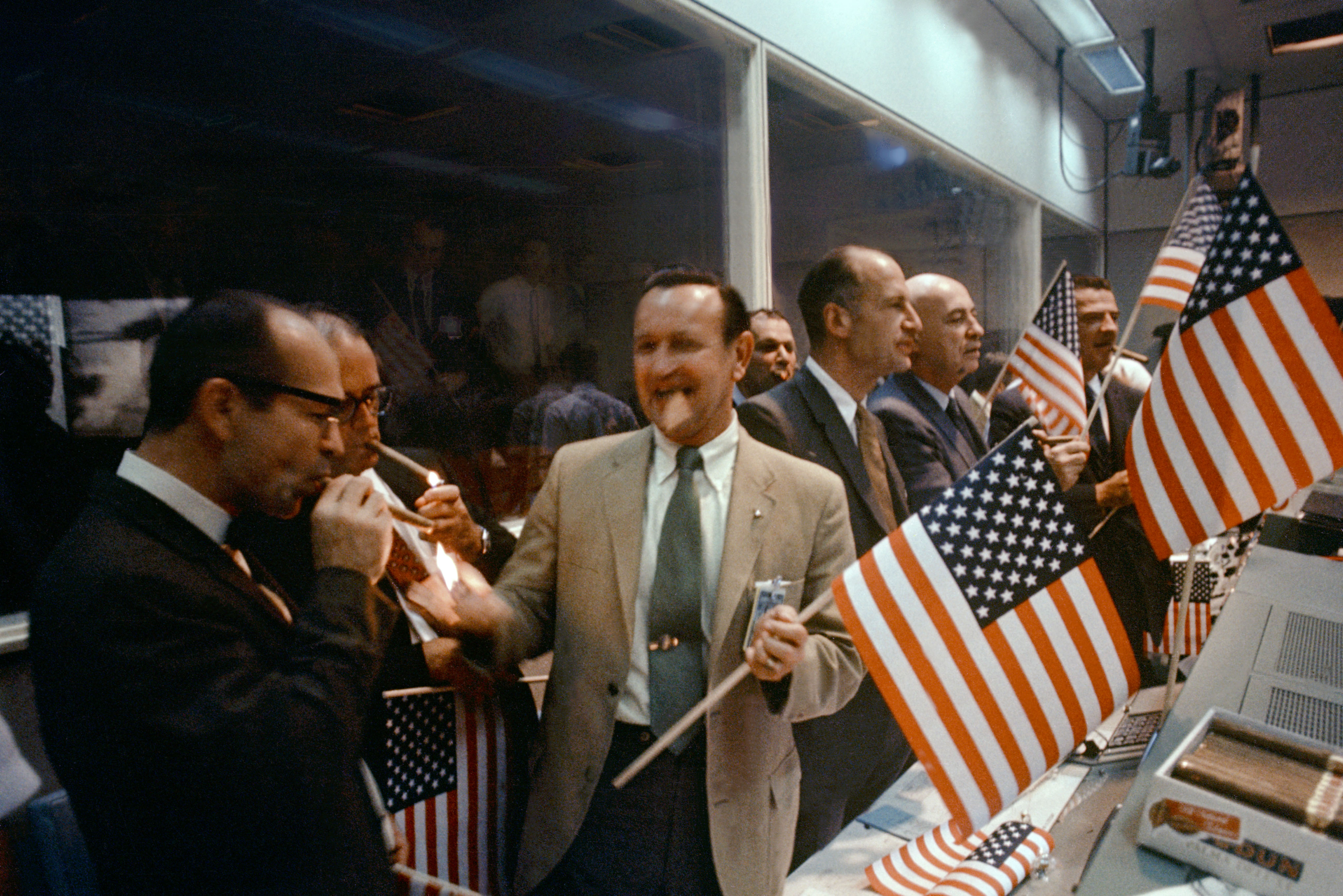As moon-landing films fill our TV screens, something becomes clear:
The world has changed profoundly in the past 50 years. These documentaries show a 1969 when:
— Americans obsessed on the Soviet threat. It “really was kind of war by another means,” said Robert Stone, whose three-night film starts Monday (July 8) on PBS.
— The space program was all-white. It went 23 years before having a black man in space.
— And it was virtually all-male. You can ask Poppy Northcutt, who was the the lone woman at Mission Control.
She shows up in films on National Geographic (July 7 and 11) and on PBS. On the second day of the PBS film (Tuesday, July 9), we see a blitz of news stories about her. In a maybe-typical one, the interviewer asks how co-workers react to someone who’s young, pretty and in a mini-skirt.
“At that time, every American woman – as well as women around the world – lived in a sea of sexism,” Norhcutt recalled of ’69. Back then, she persisted pleasantly, helping promote the space program. “But that process was part of what enlightened my future.”
Which has been rich and varied. “I became a very active feminist,” said Northcutt, 75. “I ended up as the Women’s Advocate for the Ciy of Houston … Then I went to law school and was the first felony prosecutor in a domestic violence unit in Harris County.”
Then came the National Organization of Women – on the national board and heading the Texas unit. “I tell people I’m a one-time rocket scientist, sometime-lawyer and a full-time women’s-rights activist.”
She’s in a modern day when women are astronauts and flight engineers … and, for that matter, the heads of both PBS and the National Geographic Channel. Fifty years ago, things were simple and stark.
This moon-documentary surge was boosted by a massive collection of NASA film and recordings.
“Imagine a footage archive that looks like the final scene in (‘Raiders of the Lost Ark’),” said Tom Jennings, who made National Geographic’s “Apollo: Missions to the Moon.”
In short, imagine a mega-warehouse, packed with artifacts. “We take a deep dive and try to find things that haven’t been seen in a long, long time,” he said.
He succeeded, said Garrett Reisman, an ex-astronaut who is in Jennings’ film. “I’ve watched a lot of documentaries ever simce I was a little kid. I was seeing stuff in this film that I had no idea existed.”
Like Reisman, Stone has been big on space ever since he was young. “My entire childhood was just infused with watching the rockets go off,” he said. “We were going to the moon.”
It was an exciting time, he said – but not in the way people assumed. “There wasn’t a race to the moon …. The Russians weren’t really in the game.”
He had a strong source for this – Sergei Khrushchev, 84, now an American citizen who taught at Brown and elsewhere. During the moon race, Khrushchev was a Soviet engineer and his father (Nikita) was premier of the Soviet Union … which launched the space race with its Sputnik satellite.
It “completely shocked the Soviets that the United States paid any attention to Sputnik at all,” Stone said. “They were like, ‘What? You’re freaking out over this?’”
For a time, they kept beating Americas to other space goals. Still, Stone said, they had no real moon program. But Wernher von Braun, head of the U.S. effort, kept “telling everybody that, ‘We gotta beat the Russians’ as a way to get money, but the Russians really weren’t in the game.”
That game ended on July 20, 1969, with the moon landing. The public lost interest a little … then was gripped two missions later, when the Apollo 13 crew seemed to be stranded in space.
That’s viewed in the National Geographic film, which traces all of the Apollo missions. During the Apollo 13 crisis, the public may have panicked – but the astronauts didn’t.
“A lot of people on the ground were probably getting less sleep than I was up there,” insists former astronaut Fred Haise. “I think Apollo 13 had the second-most-accurate splashdown of the program.”
That was the specialty of Poppy Northcutt, who was then a re-entry expert. “You simulate, you simulate, you simulate,” she said. “And you rise to the occasion.”
Lunar TV
Here’s a sampling of moon-oriented primetime shows; all are subject to change:
— “Apollo Moon Shot,” 8 p.m. Sundays, Smithsonian, rerunning at 11; concludes July 14
— “The Day We Walked the Moon,” 9 p.m. July 7, Smithsonian, rerunning at midnight; also, same times July 20.
— “Apollo: Missions to the Moon,” 9-11 p.m. ET July 7, National Geographic, rerunning 8-10 p.m. ET July 11; both nights have reruns at 11.
— “Chasing the Moon,” 9-11 p.m. July 8-10, PBS. Each is preceded by a moon-related hour at 8 — “Antiques Roadshow” on July 8, an “American Experience” rerun of “Space Men” on July 9 and “Nova: Back to the Moon” on July 10.
— “The Armstrong Tapes,” 9 p.m. ET, July 8, National Geographic, rerunning at 11.
— “Moon Landing: The Lost Tapes,” 10:03 p.m. July 14, History.
— “Man on the Moon,” 10 p.m. July 16, CBS.
— “Wonders of the Moon,” 10 p.m. ET July 19, BBC America.
— Also: A flood of films on July 20: They include “Apollo: The Forgotten Films,” 8 p.m., Discovery (rerunning 7 p.m. July 21, Science); “Apollo 13,” 9 p.m ET., CNN; “Moon Landing Live,” 9 p.m. ET, BBC America; and “The Day We Walked on the Moon,” 9 p.m., Smithsonian.
— “Ancient Skies” and “The Planets” series, debut 8 and 9 p.m. July 24, PBS.
